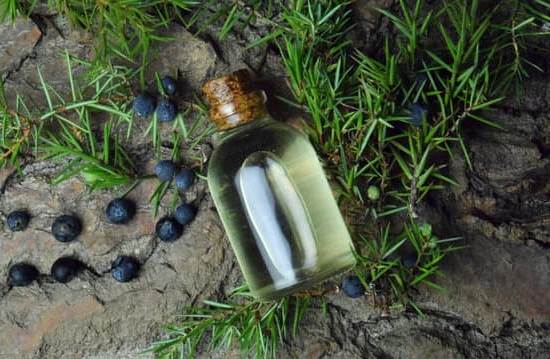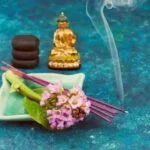Aromatherapy is a practice that has gained popularity in recent years for its ability to promote relaxation, improve mood, and enhance overall well-being. But what exactly is aromatherapy and how do you use essential oils to experience its benefits? In this article, we will explore the world of aromatherapy and guide you through the various methods of using essential oils for this purpose.
Aromatherapy is a holistic healing technique that utilizes the natural scents of plant extracts, known as essential oils, to promote physical, emotional, and mental well-being. These highly concentrated oils are derived from various parts of plants such as leaves, flowers, stems, or roots, through processes like distillation or cold pressing.
Using essential oils for aromatherapy involves harnessing their therapeutic properties by inhaling their aroma or applying them topically. The inhalation method allows the scent molecules to enter the nasal passages and stimulate the olfactory system, which in turn triggers a cascade of reactions in the body. On the other hand, applying essential oils directly on the skin allows for absorption into the bloodstream, where they can exert their beneficial effects.
In addition to promoting relaxation and improving mood, aromatherapy has been shown to have numerous other benefits such as reducing stress levels, relieving pain and inflammation, enhancing sleep quality, boosting cognitive function, and supporting immune health. With a vast array of essential oils available on the market today, it’s important to understand how they work and how to choose the right ones for your needs.
Let’s delve deeper into these aspects in order to fully grasp how to use essential oils effectively for aromatherapy purposes.
Understanding Essential Oils
Essential oils are the foundation of aromatherapy, a holistic healing practice that utilizes natural plant extracts to improve physical, mental, and emotional well-being. These oils are highly concentrated essences derived from various parts of plants such as flowers, leaves, bark, and roots. Through the process of steam distillation or cold-press extraction, the volatile aromatic compounds within these plants are captured in oil form.
The transformative power of essential oils lies in their ability to interact with our body’s senses and produce physiological responses. When inhaled or applied topically, essential oils can stimulate the olfactory system and trigger emotional and behavioral changes. This is because the olfactory system is closely linked to the limbic system of the brain which regulates emotions, memory, and mood.
Furthermore, essential oils contain potent chemical constituents that have therapeutic properties. For example, lavender oil contains linalool and linalyl acetate which have calming effects on both mind and body. Eucalyptus oil contains eucalyptol which acts as an expectorant and helps ease respiratory conditions. Each essential oil has its own unique chemical makeup that determines its specific therapeutic benefits.
To ensure safe usage, it is important to choose high-quality essential oils from trusted sources. Look for oils that are 100% pure with no additives or synthetic fillers. Additionally, consider factors like plant sourcing methods and organic certification. Lastly, always dilute essential oils before use to avoid skin irritation or adverse reactions.
By understanding what essential oils are and how they work within the body, individuals can harness their therapeutic potential to enhance overall well-being through aromatherapy practices. Whether it’s relieving stress with lavender oil or boosting focus with peppermint oil, incorporating essential oils into daily routines can provide a natural avenue for promoting health and wellness.
Choosing the Right Essential Oils for Aromatherapy
When it comes to aromatherapy, choosing the right essential oils is essential to achieve the desired benefits. With so many options available, it can be overwhelming to know where to start. However, with a comprehensive guide, you can confidently select the appropriate essential oils for your needs.
To begin, it’s important to understand that each essential oil has its own unique properties and therapeutic benefits. Some essential oils are energizing and invigorating, while others are calming and soothing. It’s crucial to consider your individual preferences and goals when selecting which oils to use.
One method for choosing essential oils is by scent preference. If you enjoy floral scents, you may want to try lavender or rose oil. For a more citrusy aroma, options like orange or lemon oil may be appealing. Additionally, some essential oils have specific properties that make them suited for certain purposes. For example, peppermint oil is known for its cooling and refreshing effects, making it great for relieving headaches or easing digestion.
Another factor to consider when choosing essential oils is their therapeutic benefits. Researching the specific properties of different oils can help you determine which ones will best address your needs. For example, if you’re looking for an essential oil with antibacterial properties, tea tree oil may be a good choice.
It’s important to note that everyone’s response to essential oils can vary based on personal sensitivities and preferences. It is recommended to start with small amounts of each chosen oil and test them on a small patch of skin before using them extensively. This way, you can ensure that you don’t have any negative reactions or allergies.
Top Methods of Using Essential Oils for Aromatherapy
When it comes to using essential oils for aromatherapy, there are several methods that can be used to experience their therapeutic benefits. In this section, we will explore some of the top methods of using essential oils for aromatherapy.
One popular method is inhalation, which involves breathing in the aromatic molecules of the essential oils. This can be done by adding a few drops of essential oil to a diffuser or humidifier and allowing the scent to fill the air. Alternatively, you can put a few drops on a tissue or handkerchief and inhale directly from it. Inhalation is a quick and effective way to experience the emotional and respiratory benefits of essential oils.
Another common method is topical application, where essential oils are applied directly to the skin. It is important to note that essential oils should always be diluted with a carrier oil before applying them to the skin.
This is because undiluted essential oils can cause skin irritation or sensitization. Once diluted, you can massage the oil into your skin, focus on specific areas like temples or wrists for targeted benefits, or add them to lotions or creams for a more subtle application.
In addition to inhalation and topical application, essential oils can also be used in baths for a relaxing soak. Adding a few drops of your chosen oil to warm bath water allows you to breathe in the aroma while enjoying its soothing effects on both mind and body. Be sure to mix the essential oil with a dispersing agent like bath salts or carrier oil before adding it to water, as this helps prevent any potential irritation.
| Method | Description |
|---|---|
| Inhalation | Breathing in the aromatic molecules of essential oils |
| Topical Application | Applying diluted essential oils directly to the skin |
| Bathing | Adding a few drops of essential oil to warm bath water |
Dilution and Safety Guidelines
Understanding Dilution
Dilution is an important aspect of using essential oils for aromatherapy. It involves mixing a small amount of essential oil with a carrier oil or another substance to reduce its potency and minimize the risk of skin irritation or other adverse reactions. The dilution ratio determines the concentration of essential oil in the final mixture, and it varies depending on factors such as the specific essential oil being used and the purpose of the aromatherapy treatment.
Why Dilution Is Important
Diluting essential oils before use is crucial because undiluted oils are highly concentrated and can be too strong for direct application to the skin. Certain essential oils, such as peppermint or cinnamon, can cause skin irritation or allergic reactions when used at full strength.
By diluting these oils, you not only ensure safety but also enhance their effectiveness. Carrier oils like jojoba oil, almond oil, or coconut oil are commonly used for dilution as they are gentle on the skin and help spread the essential oils evenly during application.
Safety Guidelines for Dilution
It is important to follow safety guidelines when diluting essential oils for aromatherapy. The general rule of thumb is to use a 2% dilution ratio, which means adding approximately 12 drops of essential oil per ounce (30ml) of carrier oil. However, some essential oils require even lower concentrations due to their potency or potential side effects.
Examples include citrus oils like lemon or bergamot, which can cause photosensitivity when applied directly to the skin. For these oils, a 1% dilution ratio (6 drops per ounce) is recommended.
Additionally, it is important to perform a patch test before applying any diluted essential oil blend to a larger area of your body. Apply a small amount of the diluted blend to a patch of skin on your inner forearm and wait for 24 hours to check for any adverse reactions. If there is no redness, itching, or other signs of irritation, it is generally safe to use the diluted blend.
By following proper dilution and safety guidelines, you can ensure the safe and effective usage of essential oils for aromatherapy and enjoy their numerous benefits without any negative side effects.
Creating the Perfect Atmosphere
One of the most popular and effective ways to use essential oils for aromatherapy is through diffusion. Diffusion involves dispersing the aroma of essential oils throughout a space, creating a soothing and therapeutic atmosphere. There are several techniques for diffusing essential oils, each offering its own unique benefits.
One common method of diffusing essential oils is through the use of an aroma diffuser. These devices blend water and essential oil to create a fine mist that is released into the air. Aroma diffusers come in various forms, including ultrasonic diffusers, nebulizers, and evaporative diffusers. Ultrasonic diffusers are especially popular as they are easy to use and often have additional features like timer settings and color-changing lights.
Another simple way to diffuse essential oils is using a reed diffuser. This method involves placing wooden sticks or reeds into a bottle of diluted essential oil. The reeds absorb the oil and release its scent into the surrounding environment. Reed diffusers are perfect for smaller spaces such as bedrooms or office cubicles.
For those who prefer a more natural approach, you can also use candle diffusion. This method involves placing a few drops of essential oil onto a heat-resistant dish placed on top of a lit candle. As the candle warms up, it will slowly evaporate the oil and fill the room with its aroma.
No matter which technique you choose, it’s important to select high-quality pure essential oils and monitor their usage. Diffusing essential oils should be done in well-ventilated areas and for limited periods of time to avoid overwhelming scents or potential adverse reactions. With proper care and consideration, diffusing essential oils can create a calming atmosphere that enhances your well-being.
| Diffusion Method | Description |
|---|---|
| Aroma Diffuser | A device that blends water and essential oil to create a fine mist. |
| Reed Diffuser | Wooden sticks or reeds placed in a bottle of diluted essential oil. |
| Candle Diffusion | A few drops of essential oil placed on a heat-resistant dish on top of a lit candle. |
Incorporating Essential Oils Into Your Daily Routine
Essential oils can be a wonderful addition to your daily routine, providing not only a pleasing aroma but also potential health and wellness benefits. Incorporating essential oils into activities such as bathing and skincare can enhance the overall experience and promote relaxation and self-care. In this section, we will explore how to effectively use essential oils in these daily rituals.
Bathing
One popular way to incorporate essential oils into your daily routine is by adding them to your bath. This can turn an ordinary bath into a luxurious and therapeutic experience.
Start by adding a few drops of your chosen essential oil or a blend of oils to a carrier oil, such as almond oil or jojoba oil, before adding it to your bathwater. The carrier oil helps dilute the essential oil and prevents it from directly coming into contact with your skin, reducing the risk of irritation.
Skincare
Many essential oils have beneficial properties for the skin, making them an excellent addition to your skincare routine. However, it is important to dilute essential oils properly before applying them topically, as they are highly concentrated. You can create your own face or body oil blend by combining a few drops of essential oil with a carrier oil that suits your skin type, such as coconut oil or sweet almond oil.
Additionally, you can add a drop or two of essential oil to your favorite facial cream or lotion for added benefits. Remember to patch test any new blends or products on a small area of skin before applying them all over the face or body to ensure that you do not have any adverse reactions.
Aromatherapy Roll-Ons
Another convenient way to incorporate essential oils into your daily skincare routine is through the use of aromatherapy roll-ons. These are oil blends that come in a rollerball bottle, making them easy to apply directly to the skin.
You can choose a roll-on blend that aligns with your specific skincare needs, such as promoting relaxation or improving the appearance of skin tone. Simply roll the oil onto pulse points or areas of concern and gently massage it into the skin.
Incorporating essential oils into your daily routine can provide numerous benefits for both your physical and mental well-being. Whether you choose to add them to your bathing ritual or customize your skincare routine, incorporating essential oils into these activities can enhance their therapeutic effects and make self-care a luxurious and enjoyable experience.
Targeted Aromatherapy
One of the great benefits of using essential oils for aromatherapy is their ability to address specific concerns and conditions. Different essential oils have different properties that can target specific issues, making them a powerful tool in promoting overall well-being. Whether you are looking to alleviate stress, improve sleep, or boost your mood, there is likely an essential oil that can help.
When it comes to addressing specific concerns and conditions, it is important to choose the right essential oil for the job. Here are some common concerns and the corresponding essential oils that may be helpful:
1. Stress and Anxiety: Lavender, chamomile, bergamot, and ylang-ylang are known for their calming properties and can help relax the mind and body.
2. Insomnia: Essential oils such as lavender, vetiver, clary sage, and sandalwood can promote relaxation and better sleep.
3. Headaches: Peppermint, lavender, eucalyptus, and rosemary are commonly used to alleviate headaches due to their analgesic properties.
4. Digestive Issues: Peppermint and ginger essential oils can be effective in relieving digestive discomforts like nausea and indigestion.
5. Respiratory Problems: Eucalyptus, tea tree, peppermint, and lemon are often used to clear congestion and support respiratory health.
It is important to note that while essential oils can be beneficial for addressing certain concerns or conditions, they should not replace professional medical advice or treatment. Always consult with a healthcare professional if you have any specific health concerns or conditions.
Incorporating targeted aromatherapy into your routine can be as simple as diffusing the appropriate essential oil in your living space or using them topically with carrier oils. Experiment with different essential oils and find what works best for you.
Essential Oil Blending
In the world of aromatherapy, essential oil blending is an art form that allows individuals to create personalized aromatherapy recipes. By combining different essential oils, you have the ability to customize your own unique blend that caters to your specific needs and preferences. Whether you are looking for a soothing blend for relaxation or a stimulating blend for energy, the possibilities are endless when it comes to essential oil blending.
When creating personalized aromatherapy recipes, it is important to consider the individual properties and benefits of each essential oil. Some oils may be more suitable for calming and relaxation, while others may have properties that promote focus and mental clarity. By understanding the therapeutic effects of each essential oil, you can tailor your blends to achieve your desired outcomes.
To get started with essential oil blending, it is helpful to have a basic understanding of scent profiles. Essential oils are categorized into top notes, middle notes, and base notes based on their evaporation rates. Top notes provide the initial burst of aroma but evaporate quickly, while middle notes add complexity and harmony to the blend. Base notes are deep and long-lasting, anchoring the fragrance and extending its longevity.
Experimentation is key when it comes to creating personalized aromatherapy blends. Start by selecting two or three essential oils that complement each other in terms of scent profile and therapeutic properties. Begin with equal parts of each oil and adjust as needed based on your personal preference. It’s important to keep track of your measurements so that you can recreate successful blends in the future.
By exploring different combinations and experimenting with various ratios, you can unlock endless possibilities for creating unique aromatherapy recipes tailored specifically to your needs. Whether you’re aiming for emotional balance, physical wellness, or simply a pleasant scent experience, essential oil blending empowers you to take control of your well-being through the power of scent.
Conclusion
In conclusion, aromatherapy with essential oils offers a natural and holistic approach to enhancing well-being. By harnessing the power of plant extracts, aromatherapy can provide numerous benefits for the mind, body, and spirit. From relaxation and stress relief to boosting mood and improving sleep, essential oils have been used for centuries to promote overall wellness.
Understanding essential oils is crucial for effective aromatherapy. These highly concentrated extracts are derived from various plant sources and each carry their unique properties and therapeutic benefits. By choosing the right essential oils for specific concerns or conditions, individuals can tailor their aromatherapy experience to suit their needs.
There are several methods of using essential oils for aromatherapy, including diffusing, topical application, inhalation, and ingestion (under the guidance of a qualified professional). Dilution and safety guidelines should always be followed to ensure safe usage. Creating the perfect atmosphere through diffusing techniques can enhance the effectiveness of aromatherapy by filling the air with the scent of essential oils.
Incorporating essential oils into daily routines is another way to maximize their benefits. Whether it’s adding a few drops to bath water or incorporating them into skincare routines, using essential oils regularly can contribute to a sense of well-being. Targeted aromatherapy allows individuals to address specific concerns or conditions such as headaches or muscle tension.
Lastly, blending different essential oils together opens up endless possibilities for creating personalized aromatherapy recipes. Combining various scents and therapeutic properties allows individuals to customize their experience based on personal preferences and desired effects.
Frequently Asked Questions
What Are the 3 Ways Essential Oils Can Be Used?
Essential oils can be used in three main ways: topically, aromatically, and internally. When used topically, essential oils can be applied directly to the skin, either neat or diluted with a carrier oil. This method is great for targeted relief and can be used for massages or to address specific skin concerns.
Aromatically, essential oils can be inhaled by using a diffuser or simply by opening the bottle and taking a whiff. Inhaling essential oils can have an immediate effect on mood and emotions. Lastly, some essential oils can be consumed internally but it’s important to exercise caution and use only high-quality, food-grade oils approved for internal use.
What Is the Most Effective Way to Use Essential Oils?
The most effective way to use essential oils may vary depending on the individual and their needs. However, in general, using essential oils topically is often considered the most effective method. When applied directly to the skin, essential oils are absorbed into the bloodstream and can provide localized relief or therapeutic benefits.
Diluting essential oils with a carrier oil helps to prevent skin irritation while still allowing for absorption. Topical application allows for direct contact with specific areas of the body that need attention, making it more targeted than other methods.
How to Use Essential Oils for Aromatherapy Without Diffuser?
If you don’t have a diffuser, there are still alternative ways to enjoy the benefits of aromatherapy using essential oils. One simple method is inhalation straight from the bottle or applying a drop of oil onto your palms, rubbing them together gently, then cupping your hands over your nose and mouth while taking deep breaths. This allows you to inhale the aroma directly without needing any additional equipment.
Another option is creating a homemade room spray by combining water with a few drops of your desired essential oil in a spray bottle; you can then spritz this mixture around your living space as needed for a subtle fragrance throughout the day. Additionally, adding a few drops of essential oil to a warm bath can create a calming and aromatic experience that promotes relaxation.

Are you looking for a natural way to improve your health and wellbeing?
If so, aromatherapy may be the answer for you.





